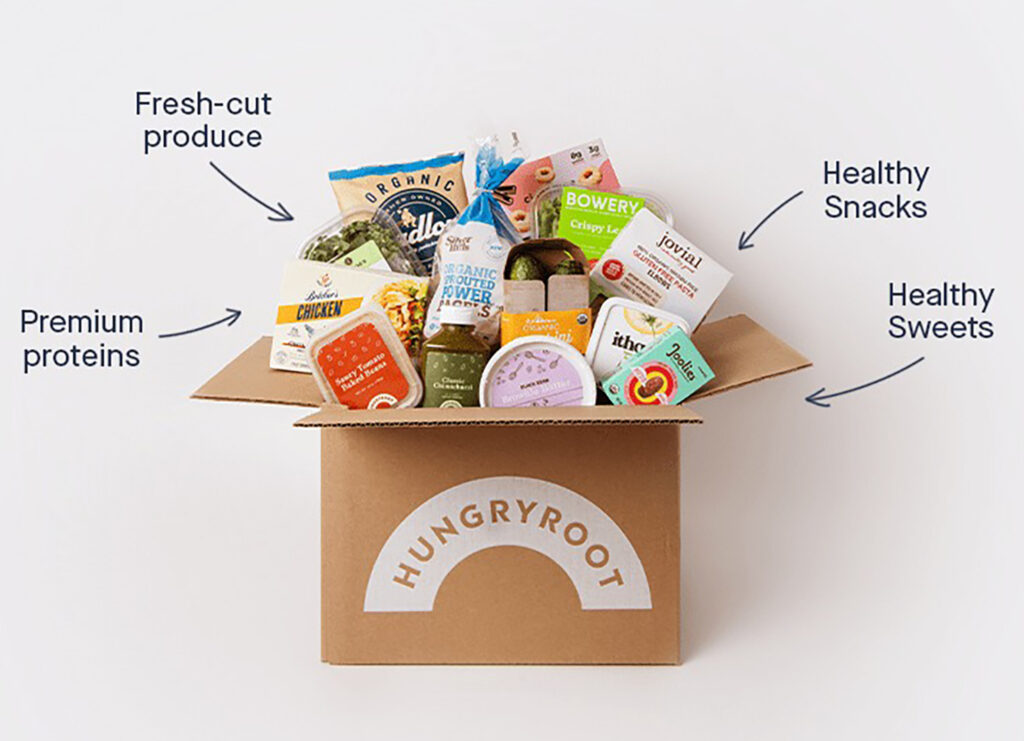In an era where convenience and health have become non-negotiable, the kitchen is undergoing its most dramatic transformation in decades. Traditional meal planning—once a ritual of handwritten shopping lists and last-minute supermarket sprints—is being swiftly upended by intelligent systems that do the thinking for you. At the center of this domestic revolution stands Hungryroot, an AI-powered grocery and recipe service that merges algorithmic precision with culinary personalization. And according to Bon Appétit, it “might just be the best of all meal kits.”
Hungryroot doesn’t merely send boxes of pre-chopped ingredients and step-by-step recipe cards. It redefines the relationship between the home cook and the act of cooking itself—blurring the lines between personal chef, nutritionist, and grocery concierge. With every user interaction, the platform gets smarter, adapting to dietary needs, taste preferences, cooking skill levels, and lifestyle rhythms. The result? A system that doesn’t just tell you what to eat—it learns how you live.
Smarter Than Your Fridge: How Hungryroot Works
At its core, Hungryroot operates as an AI-driven personal food planner. Users begin by completing a detailed onboarding survey, outlining not only food preferences and allergies, but also how much time they want to spend in the kitchen, how many people they’re feeding, and even their health goals—whether that’s eating more plant-based meals or cutting back on refined sugar.
From there, Hungryroot’s algorithm curates weekly grocery shipments composed of fresh ingredients, semi-prepped staples, and ready-to-use sauces and proteins. But unlike traditional meal kits, which are often rigid in portioning and recipe structure, Hungryroot’s approach is modular and flexible. The ingredients can be combined in multiple ways—allowing room for creativity while still ensuring nutritional balance.
Every week becomes a new conversation between cook and code. The more you rate meals, swap suggestions, or flag dislikes, the more refined your future deliveries become. In effect, Hungryroot functions like a culinary mirror: a reflection of your evolving palate, informed by data.
Bon Appétit’s Verdict: Why This One Stands Out
In a crowded market of meal delivery giants—Blue Apron, HelloFresh, Sunbasket—Bon Appétit’s glowing review of Hungryroot is telling. What sets it apart, the publication argues, is its synthesis of flexibility, wellness, and genuine flavor.
Unlike kits that often feel like a novelty or a once-a-week indulgence, Hungryroot integrates seamlessly into everyday life. Its ingredients aren’t gimmicky or over-complicated. Think chickpea cavatappi pasta, za’atar tofu, pre-washed baby kale, and cashew cheddar. These aren’t just components of a single dish—they’re grocery staples reimagined.
Bon Appétit also praised the brand’s attention to ingredient quality and time efficiency. Many recipes take under 15 minutes to prepare and don’t rely on elaborate techniques. The aim isn’t to turn every user into a chef—it’s to empower them to feel like one, without the stress.
Food-as-Data: The Algorithmic Appetite
Hungryroot’s true innovation lies in how it treats food not just as sustenance, but as data to be optimized. Every chosen recipe, every rejected snack, every rated sauce becomes an input in a massive neural system designed to streamline home eating.
In the background, machine learning models analyze these inputs against a database of thousands of curated recipes and hundreds of brand partners. The goal: maximize satisfaction and minimize decision fatigue.
In this model, grocery shopping is no longer a separate act from meal planning. They collapse into a single algorithmic function. That’s not just efficient—it’s paradigm-shifting.
And as climate, health, and time-consciousness become more urgent lifestyle concerns, services like Hungryroot offer a blueprint for how AI can augment human decision-making without overwhelming it.
The Wellness-First Framework
While many meal kits chase culinary trends or push a chef-driven narrative, Hungryroot’s orientation remains grounded in functional wellness. This isn’t about plating aesthetics or foodie bravado. It’s about helping people eat better—consistently, joyfully, and with minimal friction.
Nutrition filters let users select preferences like “gluten-free,” “low-sodium,” or “high-protein.” Calorie-conscious or plant-based diets are integrated seamlessly. But more importantly, Hungryroot doesn’t sacrifice taste in the name of health. Recipes are built on foundational flavors—umami-rich sauces, fiber-packed grains, spicy condiments—that appeal across dietary lines.
It’s this union of flavor and function that makes the brand especially resonant in 2025, when wellness is no longer a luxury market but a universal expectation.
Consumer Psychology Meets Culinary UX
Hungryroot succeeds because it understands that modern consumers don’t want to be overwhelmed—they want to be guided, not dictated to. Unlike rigid diets or pre-cooked meals, Hungryroot leaves just enough agency in the hands of the user. You assemble, you season, you serve—but you’re never starting from scratch.
This user-centric philosophy extends to their app interface, which allows real-time swaps, schedule modifications, and delivery adjustments. Each element is built with psychological insight: reduce friction, minimize overwhelm, and emphasize ease.
In a cultural moment increasingly defined by burnout and decision fatigue, this is not just welcome—it’s necessary.
The Future: Hungryroot’s Growing Ecosystem
Beyond weekly groceries and meal planning, Hungryroot is building an ecosystem. The company has begun integrating third-party health platforms (like Fitbit and Apple Health), offering recipe recommendations based on biometric feedback. Expect deeper integrations with AI voice assistants, sustainability tracking tools, and mental wellness platforms in the near future.
Its business model, too, is evolving. What began as a direct-to-consumer startup is now forming strategic partnerships with health clinics, nutritionists, and wellness apps. The future isn’t just home cooking—it’s home health, automated and optimized.
Flow
More than a box of ingredients or a novelty service, Hungryroot offers a philosophical shift in how we feed ourselves. It merges algorithmic intelligence with human intention. It doesn’t just respond to what we want—it learns what we need, often before we articulate it.
In a world where time is scarce, grocery prices volatile, and health goals overwhelming, Hungryroot provides an elegant solution: food that’s fast, flexible, and fulfilling. And if Bon Appétit is any indication, it may very well be the best meal kit available today—not because it replaces the joy of cooking, but because it restores it.
No comments yet.








